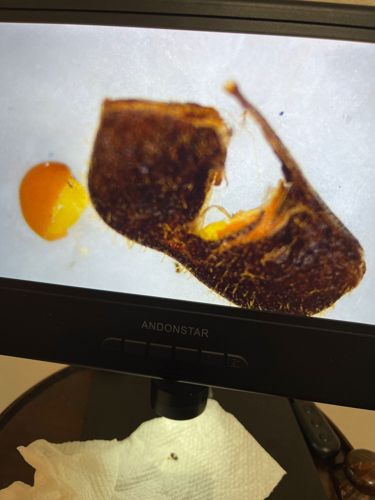Honey Bee Prop-pod/Pollen
Scientific Name: Apis mellifera (most common species pictured)
Order & Family: Order: Hymenoptera, Family: Apidae
Size: Worker bees typically range from 10 to 15 mm (0.4 to 0.6 inches) in length.

Natural Habitat
Honey bees are found globally in a variety of habitats, including forests, grasslands, gardens, agricultural areas, and urban environments, wherever flowering plants are present. They build their nests (hives) in sheltered locations like tree hollows, cracks in rocks, or in man-made structures.
Diet & Feeding
Honey bees primarily feed on nectar and pollen collected from flowers. Nectar provides carbohydrates (energy), and pollen provides proteins, vitamins, minerals, and fats essential for growth and development.
Behavior Patterns
Bees are social insects (though some are solitary). They live in colonies with a queen, drones, and worker bees. Workers collect nectar and pollen, and convert nectar into honey. They communicate through dances to indicate food sources. They are active during the day.
Risks & Benefits
Benefits: Honey bees are crucial pollinators for a vast number of food crops and wild plants, contributing significantly to biodiversity and agricultural productivity. They also produce honey, beeswax, propolis, and royal jelly, which have various human uses. Risks: Their sting can cause pain, swelling, and allergic reactions (anaphylaxis) in sensitive individuals. Over-reliance on a single species for pollination can be a risk if their populations decline.
Identified on: 9/4/2025